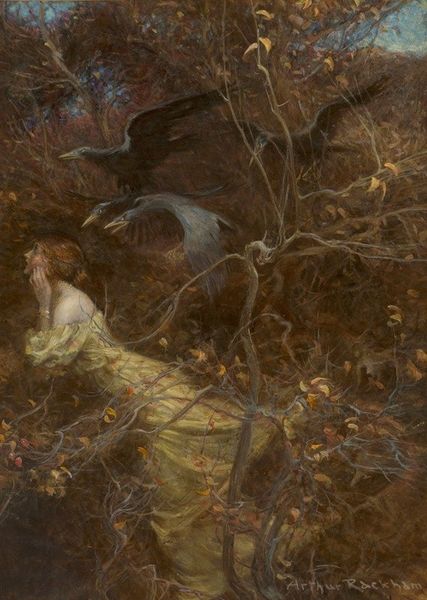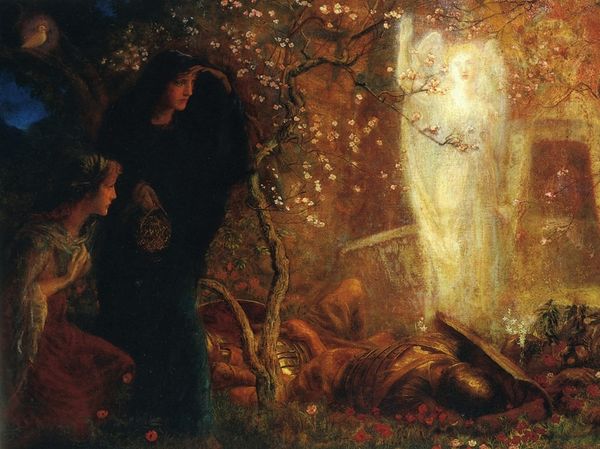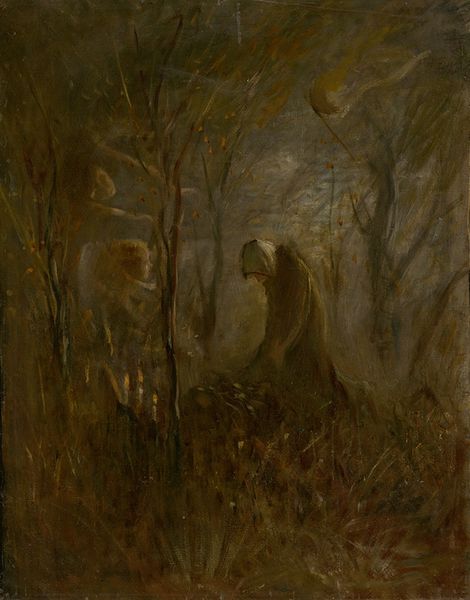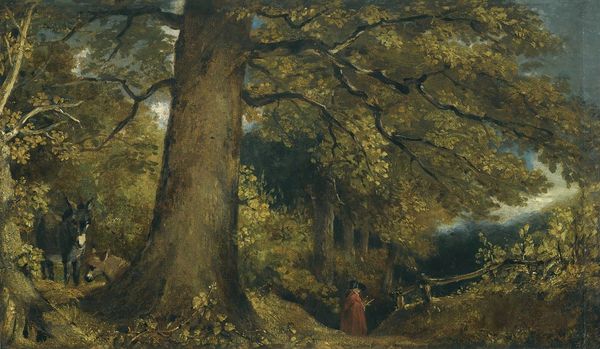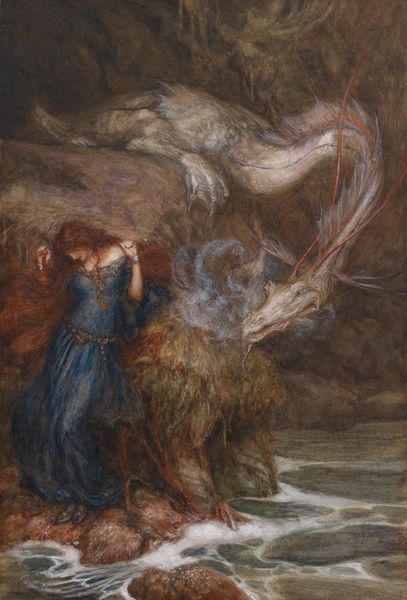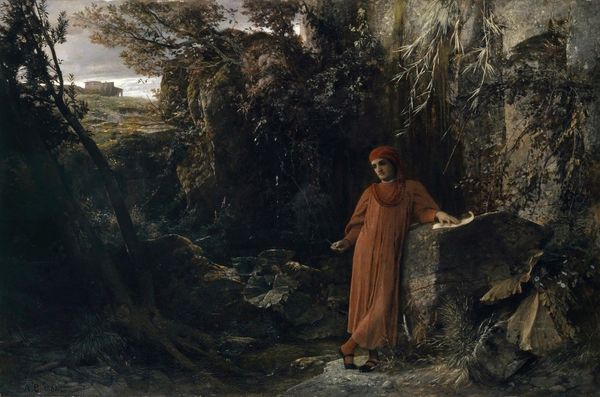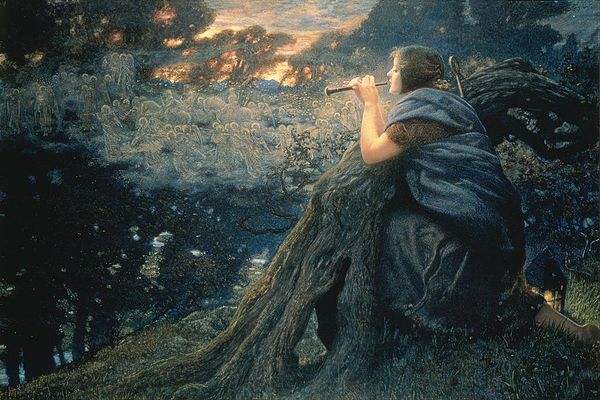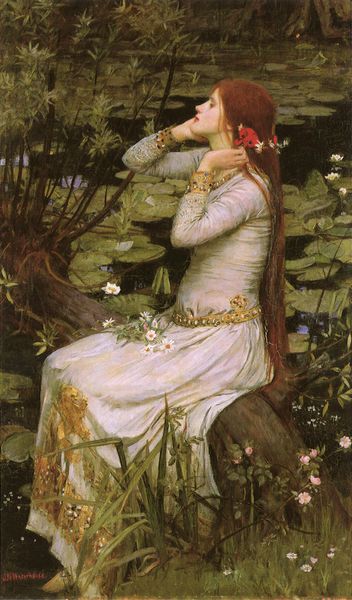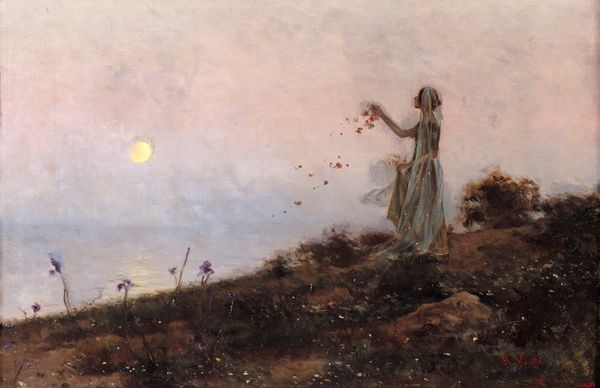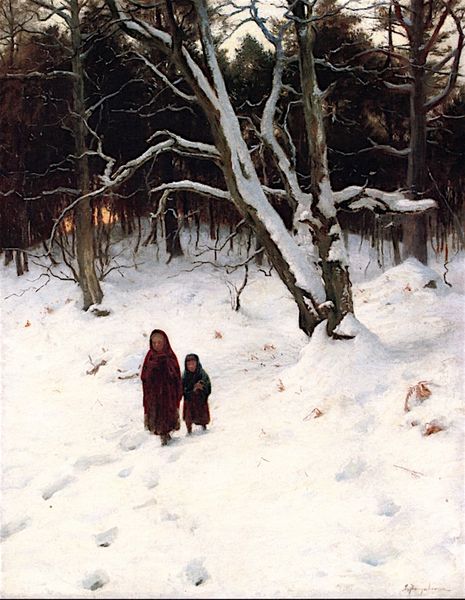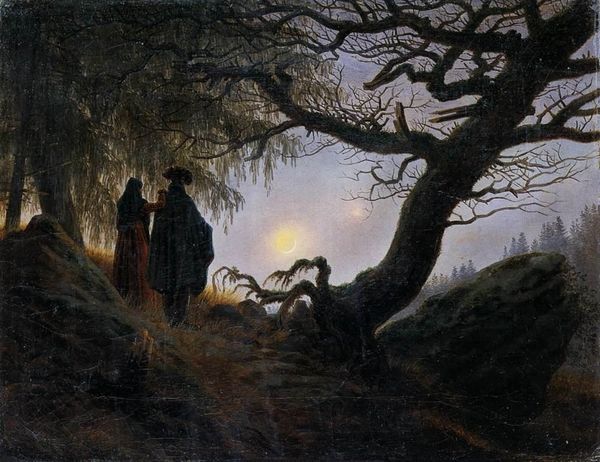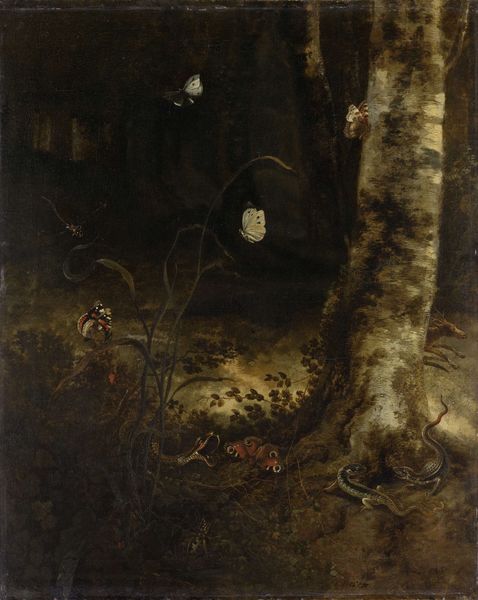
Copyright: Public domain
Editor: So, this is "The Sere and Yellow Leaf," an oil painting from 1882 by Joseph Farquharson. It feels really… heavy, somehow. Melancholy, even. All those muted browns and reds. What do you see in this piece? Curator: Beyond the literal, I perceive layers of cultural memory embedded within this seemingly simple scene. Notice how the old woman gathering wood echoes archetypal figures of folklore and myth. The forest itself is a powerful symbol. Forests represent the unknown, the untamed, where we confront our deepest fears and hidden potential. Editor: Oh, like a fairy tale! Is she Little Red Riding Hood’s grandmother? Curator: Perhaps in a way. The red hood immediately draws the eye and may signify danger, warning, but also life itself. What does red symbolize to you in this context? Consider the setting – autumn, a time of decay. The “sere and yellow leaf” signifies not just the dying of the year, but mortality. This woman collecting firewood becomes a potent image of survival in the face of inevitable decline. She is literally fueling life against the encroaching darkness. Editor: So, it's not just a portrait, it’s a commentary on life, aging, and resilience. I initially missed all those symbolic undertones. Curator: Precisely! Farquharson uses familiar visual cues, almost unconsciously recognized, to trigger deeper emotional responses. Consider her posture; her hunched frame. It is communicating a weight borne over time. Do you see that symbolism echoed in other visual elements? Editor: Yes, I see it now. The barren trees, the fading light...they all seem to speak to this idea of burden and the passage of time. I'll definitely look closer at the symbolic side of things from now on. Thanks!
Comments
No comments
Be the first to comment and join the conversation on the ultimate creative platform.
